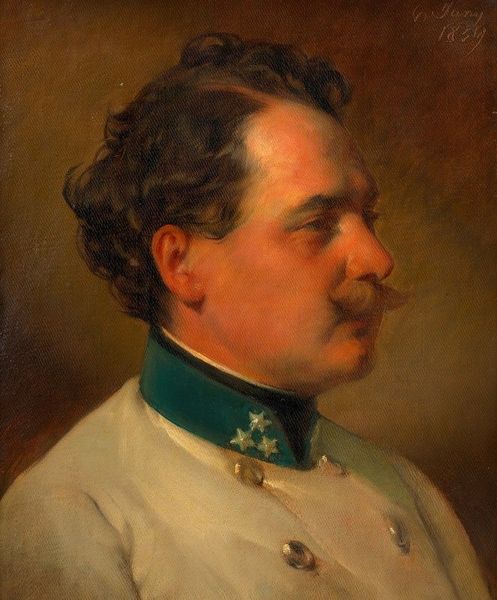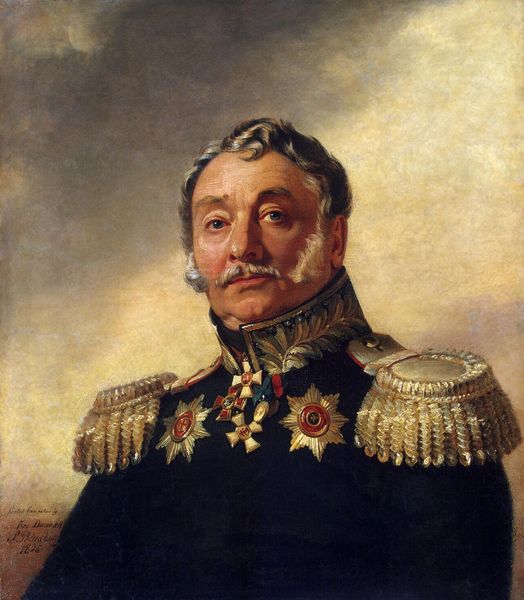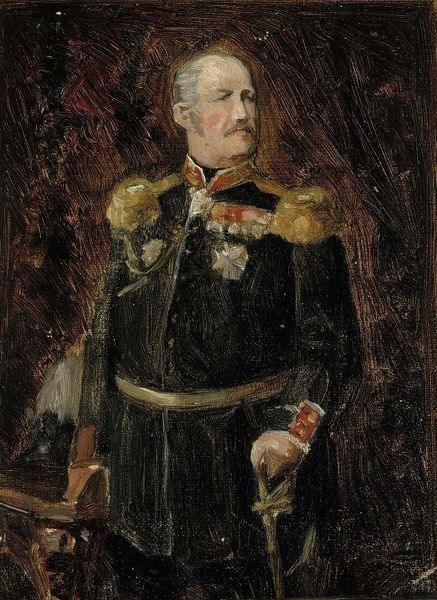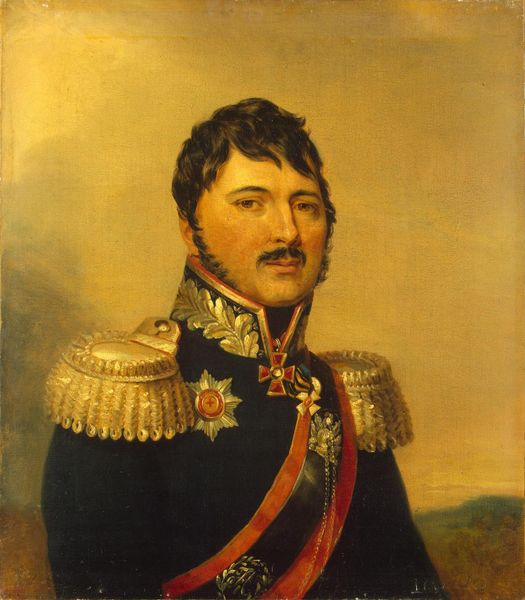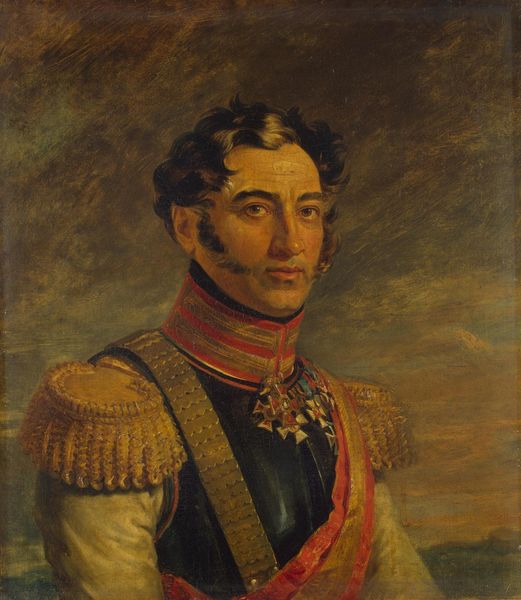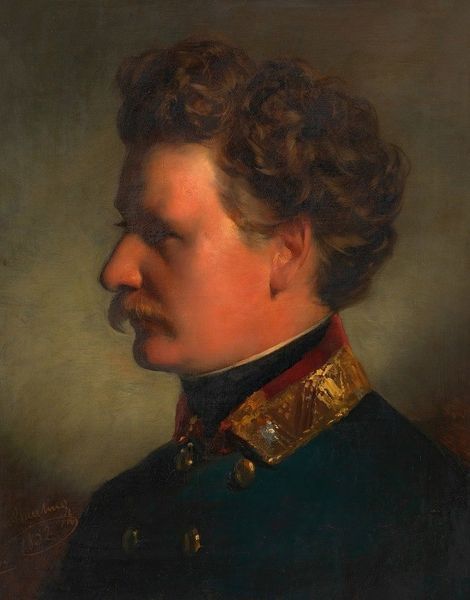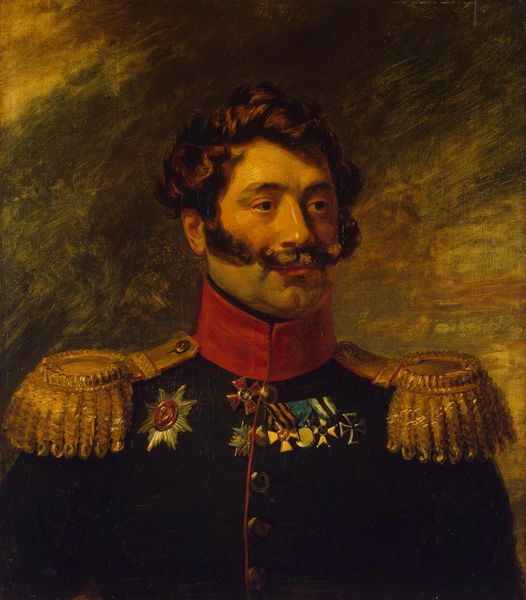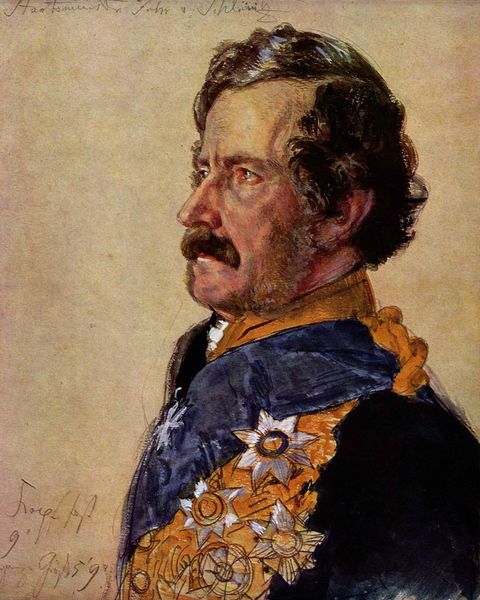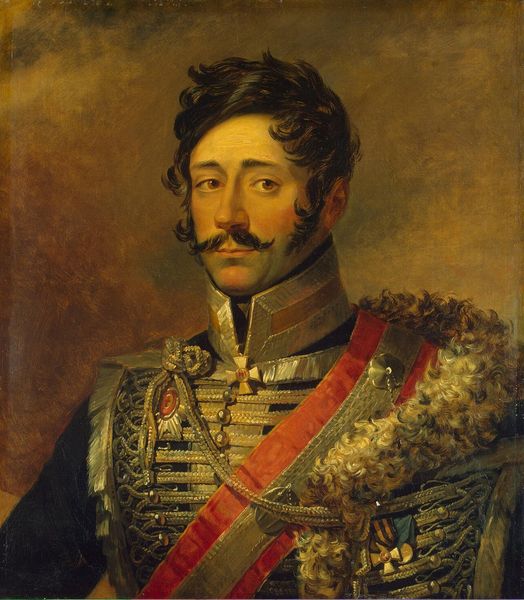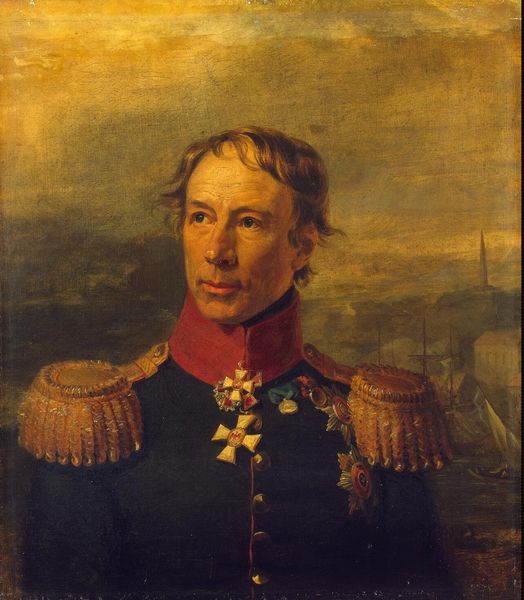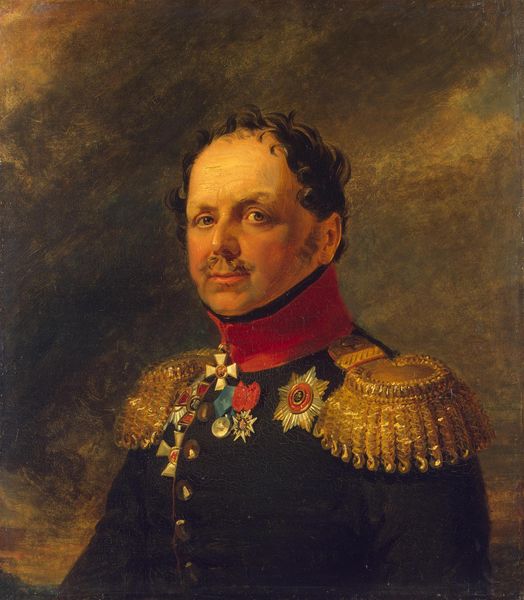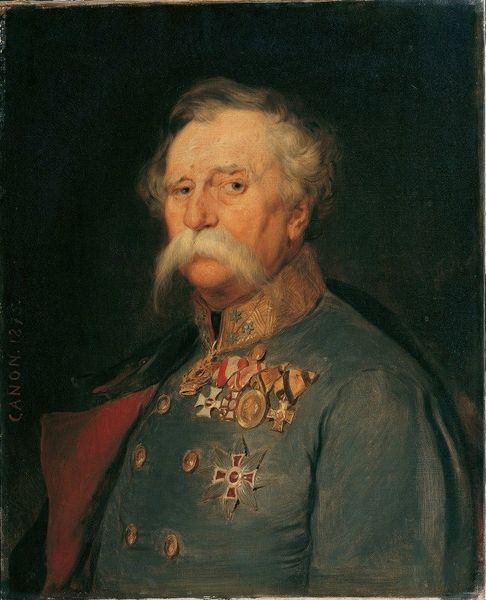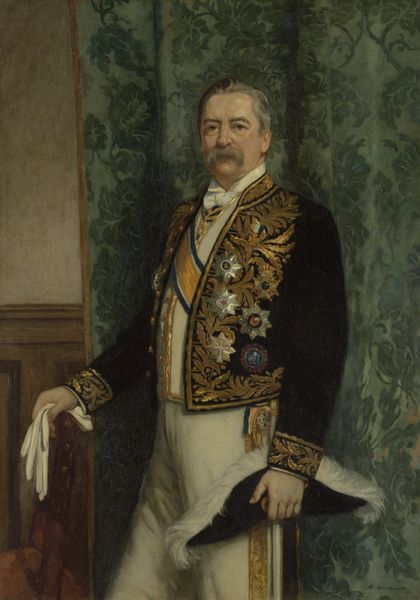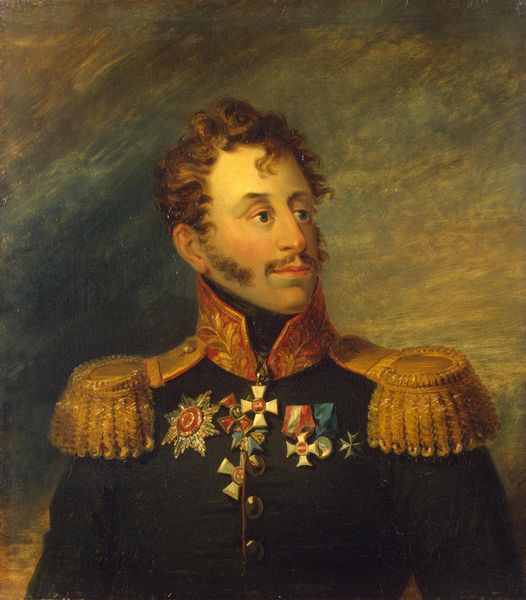
Copyright: Public Domain: Artvee
Curator: Here we have Hans Canon’s “Karl Ludwig Freiherr von Schönermark,” painted around 1865. Editor: What strikes me immediately is the crispness of the white uniform against that shadowy background; it gives such weight and presence to the figure. You really see the weave and texture. Curator: Absolutely. And it’s worth considering the significance of these formal portraits during the 19th century. Beyond mere likeness, these images project power and legitimize hierarchies of gender, race, and class, wouldn't you say? The sitter's very pose is meant to convey authority. Editor: Precisely! Canon is using the classic vocabulary of power; those glimmering buttons, that intricate gold braid, the carefully arranged medals—they speak to the meticulousness of creating the impression of wealth and control. I wonder about the cost of the materials here and the workshops where they were manufactured? Curator: Well, the choice to depict Freiherr von Schönermark with these signifiers of nobility says volumes. But consider what those medals signify, what political actions and alliances might they represent? Who did Canon expect would be viewing this portrait and what messages were encoded for them? Editor: And also, think about the canvas, the paints themselves, how the very materials contributed to reinforcing the subject's importance. The weight of the frame is part of it all. What type of workshops fabricated the canvases he would have been working on? Curator: Yes! Canon uses those readily available materials to perpetuate the very ideologies that give meaning to the aristocracy’s visual presentation. We’re seeing how systems of belief get physically rendered in oil on canvas. It's interesting how artists like Canon play a vital role in maintaining these visual tropes. Editor: Thinking about process here, do you consider the impact of mass production on how uniforms and these symbols of wealth and class were made? Canon may have been elevating the Baron, but what does his painting tells us about a burgeoning industrialized economy propping up an older regime? Curator: I find myself pondering Canon’s role, almost as an illustrator. By depicting Freiherr von Schönermark, he reinforces this idealized, romanticized view of aristocracy, while, simultaneously maybe undermining traditional aristocratic visual language with readily available industrial methods. Editor: Ultimately, the image prompts us to question how authority and prestige are constructed. Curator: Agreed, and whose stories get told and retold through art history, solidifying certain power structures, intentionally or not.
Comments
No comments
Be the first to comment and join the conversation on the ultimate creative platform.
